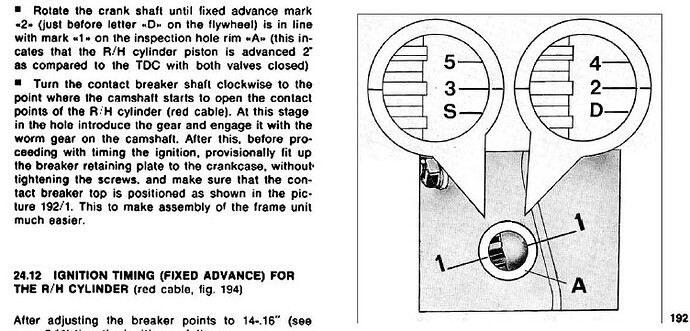Hi all,
I stripped, ultrasonically cleaned, painted & rebuilt my carbs using the Dell’Orto refurb kits. I’m reasonably sure that I put everything together correctly, and the bike runs, but it’s not right. Before I strip the carbs again, I’d appreciate any experiences or pointers anyone can offer.
The plugs are black (right) & black /wet (left) so it’s obviously stupidly rich.
It’s idling on the right cylinder, the left fires occasionally, it starts when cold, it will start when warm if I don’t touch anything other than the starter button. Opening the throttle it picks up on both cylinders & revs freely, but starts popping & banging at constant throttle & 5k rpm. Don’t want to do that too much, we have nice neighbours and I’d like them to stay that way.
When idling, the left carb adjuster screws make no difference, the engine does change with the screws on the right carb.
There is slack in the “choke” cables.
The throttle cables are approximately synched, I haven’t put the vac gauges on it yet.
Tappets are correct, timing is also good.
My thoughts are
1 float valves not seating (I don’t think they included new ones in the kit, so I presumably put the old ones back in)
2 floats set too high, causing flooding (or at least incorrect fuel level)
3 I’ve reassembled something wrong
Hopefully Gutsibits have float valves in stock, I’ll order a pair & fit them.
Any other ideas?
Ta
Simon
